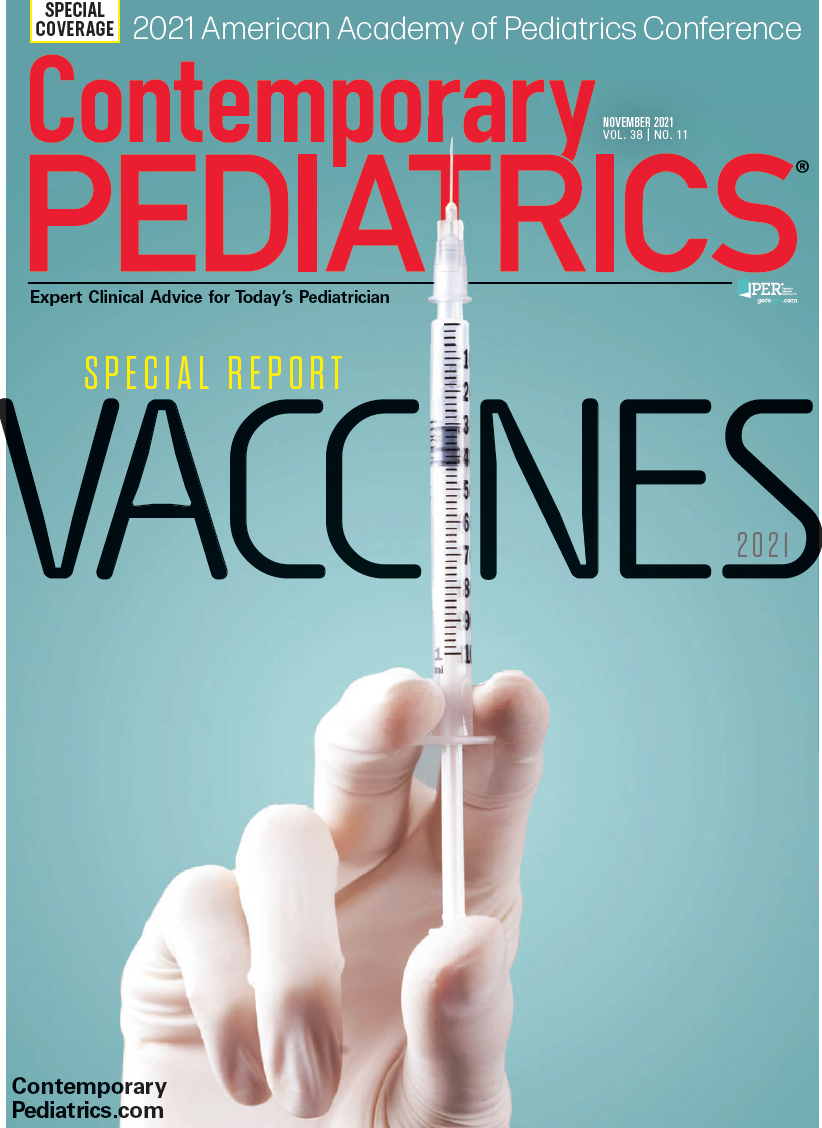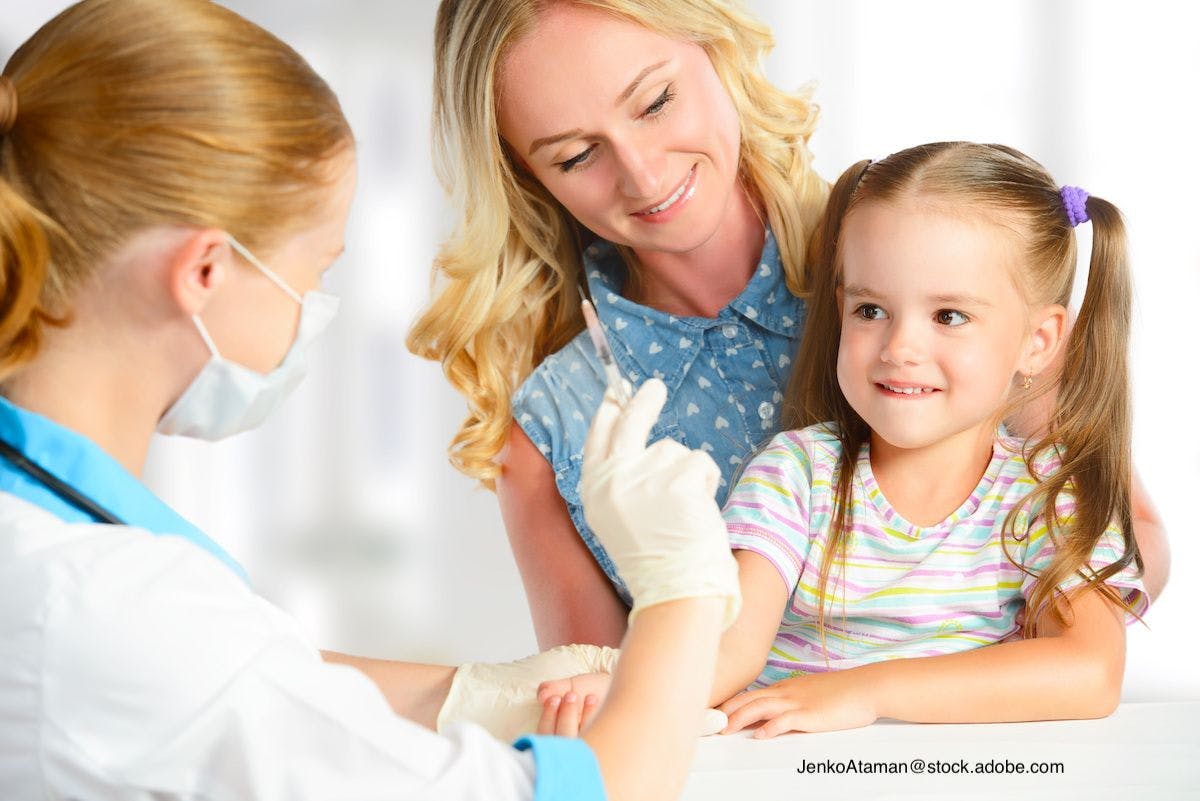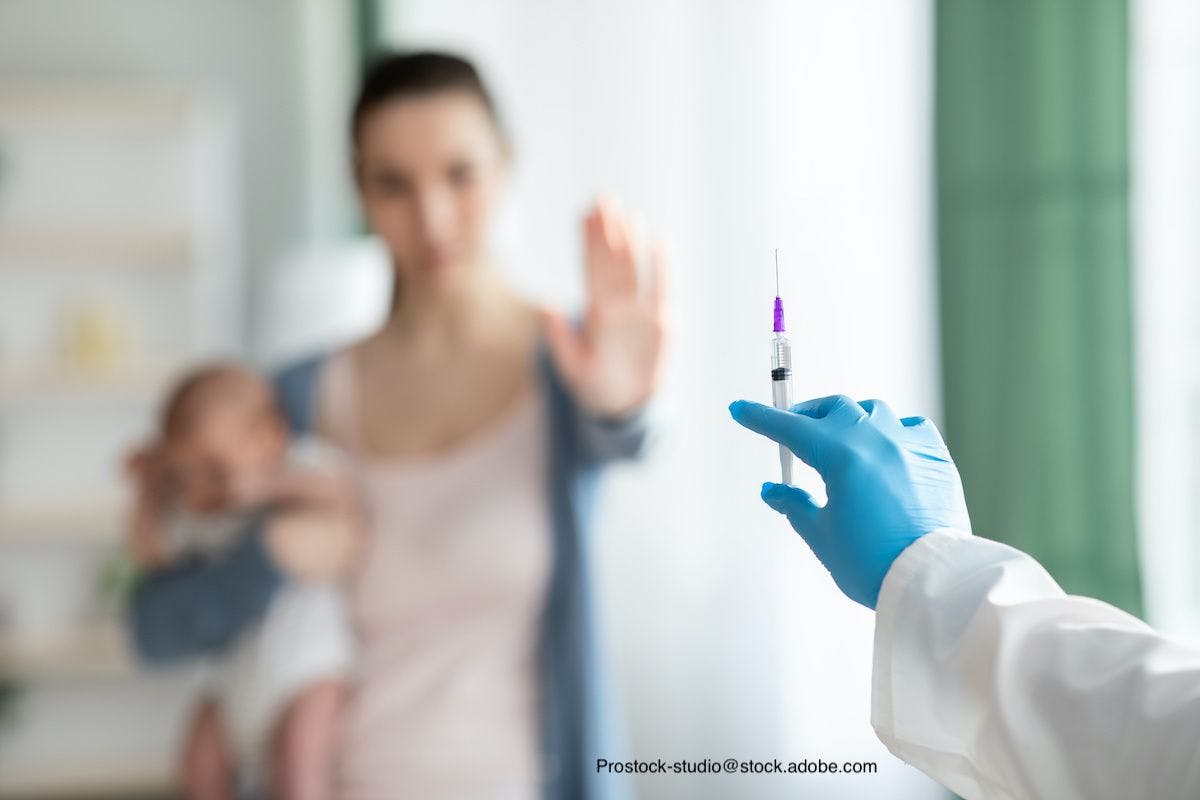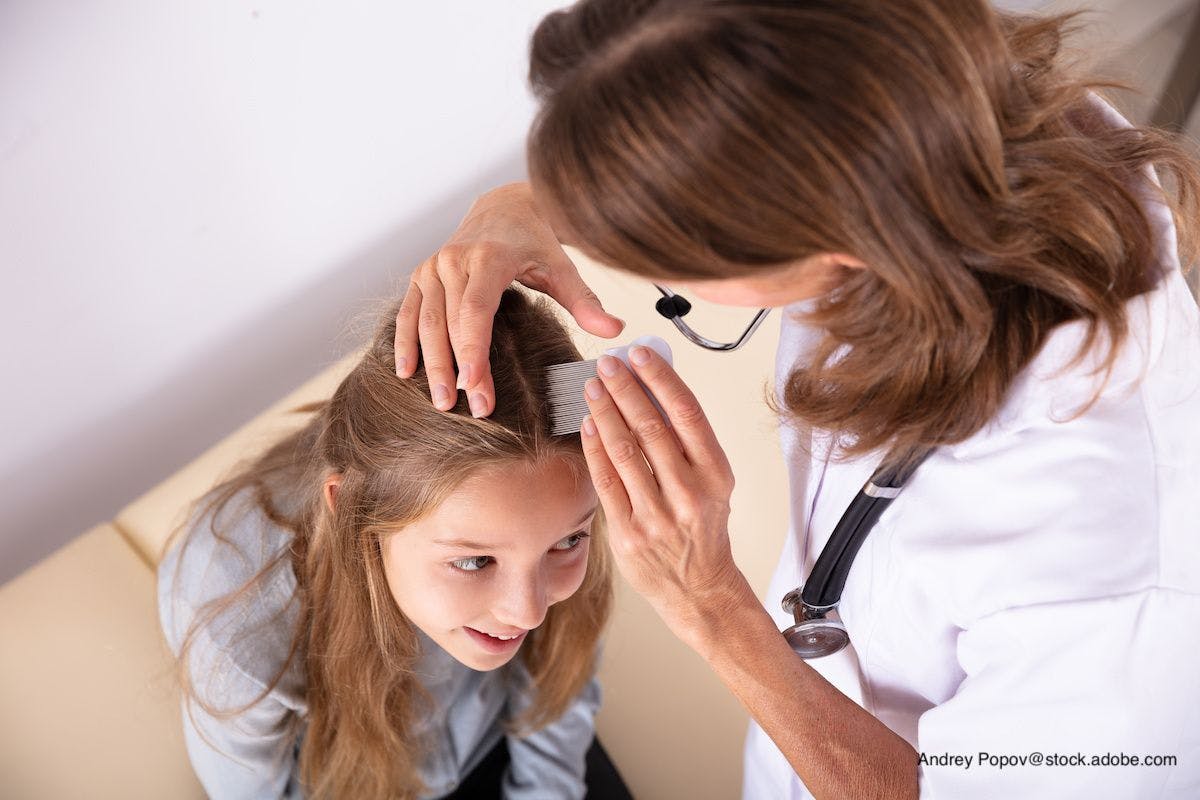Vaccines recommended but not required: Evidence that supports a strong recommendation to parents
Not every vaccine is required, some are just strongly recommended. Here's what to know about 5 recommended vaccines.
Several vaccines are recommended for infants, children, and adolescents on the Centers for Disease Control and Prevention (CDC) schedules,1 but are not required for entrance into school or other activities, such as sports and social organizations. However, there are compelling reasons for all providers who care for pediatric populations to be knowledgeable about these vaccines and make recommendations to parents to accept 1 or more of these vaccines. Provider recommendations should be based on the best available evidence on the CDC vaccine websites,1 the corresponding Advisory Committee on Immunization Practices (ACIP) websites,2 the current edition of the Red Book,3 and the Pink Book.4
This article presents 5 vaccines that are recommended but not required for various ages of the pediatric populations.
Human papillomavirus (HPV)
HPV is a common sexually transmitted infection (STI)5 that is often acquired soon after the first sexual encounter,5 in particular by individuals who do not practice safe sex recommendations eg, use of condoms and other barrier precautions.6 Although most HPV infections are transient and asymptomatic, there are high-risk forms of mucosal types of HPVs that infect adolescents and young adults and are transmitted through intimate skin-to-skin contact, eg, sexual intercourse or close genital contact. Repeated and/or persistent high-risk mucosal forms of HPV increase the risk for adolescents and young adults to develop precancerous lesions as well as oropharyngeal, cervical, and anogenital cancers in the young adult years, or even decades later.3,7 Six types of invasive cancers are caused by HPV infections. They include cancers of the cervix, vagina, vulva, penis, anus, and oropharynx, inclusive of the back of the throat, base of the tongue, and tonsils.3,8 Cervical cancer is the most common HPV-attributable cancer in females, and oropharyngeal cancer is highest among males.3,7
Overall, HPV vaccine can prevent over 90% of cancers caused by HPV.7
HPV vaccine
Although there were 3 prophylactic HPV vaccines licensed in the United States, only 1 vaccine, the 9-valent HPV vaccine (9vHPV, Gardasil 9, Merck), is currently available for use. The 9vHPV vaccine (types 6, 11, 16, 18, 31, 33, 45, 52, and 58), identified as Gardasil 9, was licensed by the FDA in 2014.3 Studies have shown that 97% of healthy vaccine recipients develop antibodies to the 9 serotypes in the HPV vaccine.3 The HPV vaccine is a prophylactic vaccine,5 thus the effectiveness of the vaccine is for those individuals who are free of infection at time of vaccine administration.3,5 It has been shown that individuals who are infected with 1 or more HPV serotypes prior to or at the time of HPV vaccine administration do not develop protection against progression of HPV disease for that particular serotype or viral strain.3,5
Ideal age for the HPV vaccine
The 9vHPV vaccine was initially licensed for use in children beginning at 9 years of age to young adults aged 26 years. It is now also licensed for some adults aged 27 to 45 years.5 The American Academy of Pediatrics (AAP) recommends starting the 9vHPV vaccine between ages 9 and 12 years whereas ACIP recommends beginning the vaccine between 11 and 12 years of age.
Dose, timing, and precautions for the HPV vaccine
For children and adolescents aged 9 to 15 years old, the recommended HPV schedule is for the 2-dose series. The second dose should be scheduled 6 to 12 months after the first dose. The minimal interval for the second dose is 5 months.1,3 Children with a history of sexual abuse or assault should begin the 9vHPV vaccine series at age 9 as they are considered at increased risk for high-risk sexual behaviors and/or future victimization.3
All adolescents who are aged 15 years or older receive the 3-dose vHPV vaccine series. The second dose should be administered 1 to 2 months after the first dose. The third dose should be administered 6 months after the first dose with a minimal interval of 5 months, and 12 weeks after the second dose.1,3
Influenza
Influenza (flu) is a contagious respiratory illness that circulates throughout the year. However, influenza predominantly circulates at endemic and epidemic levels in the United States from October to March, and may persist until May in some areas of the country.4,8
Infants, toddlers, children, and adolescents with chronic illnesses, are at high risk for complications and death related to influenza. However, even healthy children who contract influenza may experience the burden of influenza complications and death.
Each year, human influenza types A and B viruses are the usual cause of seasonal epidemics of influenza disease in the United States. There are currently 2 subtypes of influenza A viruses that routinely circulate in people: A(H1N1) andA(H3N2).4,9 Influenza type B are classified as 2 lineages: B/Yamagata and B/Victoria.9,10 Type B influenza does circulate in the United States and worldwide each year. Presenting symptoms for all types of influenza may include sudden onset fever, nonproductive cough, chills, myalgia, headache, and malaise. These initial symptoms are often followed by complaints of sore throat, nasal congestion, rhinitis, and cough.3 Infants may also present with sepsis-like illnesses, including complications of otitis media, croup, pertussis like-illnesses, bronchiolitis, or pneumonia.3
Influenza vaccination rates increased in the 2020-2021 influenza season and additional attention to basic health safety measures, such as wearing masks, handwashing, and no sharing of eating and drinking materials, may have impacted the reduction in influenza disease burden during this influenza season.
Ideal age for the influenza vaccine
All children and adolescents should receive an annual influenza vaccine. The earliest an infant can receive the influenza vaccine is at age 6 months.1,3,4 However, infants whose mothers receive the influenza vaccine during the prenatal period benefit from transplacental transfer of antibodies against influenza, protecting them during the first 6 months of life.2,4
For any infant aged 6 months and older, or child up to 9 years of age who have not received the influenza vaccine in the past, needs to receive 2 doses of the influenza vaccine, spaced 4 weeks apart, to produce an adequate immune response. For infants and children who have received 2 doses of the influenza vaccine during the previous influenza season, the infants and children only need 1 dose of the vaccine annually, preferably before the start of the influenza season.
Dose, timing, and precautions for the influenza vaccine
Infants and children younger than 2 years must receive the inactivated influenza vaccine (IIV) and children aged older than 2 years, without asthma restrictions, may receive either the IIV or LAIV. The advantage of the LAIV is that it is administered as a nasal spray, thus “it is not a shot” for those toddlers and preschoolers who so dislike “the shots.” All nasal spray influenza vaccines for the 2020-2021 influenza season were quadrivalent, therefore the 4 influenza viruses that were covered included influenza A(H1N1) virus, influenza A(H3N2) virus, and 2 influenza Type B viruses.10,11
Quadrivalent injectable influenza vaccines are available for infants, children, and adolescents. All providers must consult the manufacturer prescribing information or the CDC to determine the age-appropriate dose to prevent potential dose administration errors. For example, the Afluria Quadrivalent (Seqirus) for infants aged 6 to 35 months is 0.25 mL IM, whereas the Fluarix Quadrivalent, (GlaxoSmithKline) dose is 0.5 mL IM for infants aged 6 months and older.12,13
All providers should ask questions about egg allergies and previous experiences after receiving the influenza vaccine.13 Practitioners should provide the flu VIS sheet for the influenza vaccine, noting that the flu VIS is no longer updated every year.13 For example, the August 15, 2019 flu VIS was given to all recipients of the 2020-2021 influenza vaccine.
Hepatitis A
Parents may hear about hepatitis A virus outbreaks in their communities when a food handler at a food establishment, or a day care worker, or a school employee, who unknowingly has hepatitis A, spreads the virus to a group of individuals who have had person-to-person contact with the infected individual. Unvaccinated infants and children in day care and preschool programs are at high risk of contracting hepatitis A virus if they come in contact with an infected day care worker. The long incubation period for hepatitis A virus of 15 to 50 days contributes to an individual unknowingly spreading the disease prior to onset of any symptoms.3 Transmission of hepatitis A occurs person to person by fecal contamination from the infected person followed by oral ingestion by a nonvaccinated, hepatitis A-susceptible individual.3 Adolescents may also contract hepatitis A during sexual con- tact with an infected person.14 In addition, reports of outbreaks of hepatitis A occur after individuals eat raw fruits and vegetables without thoroughly washing the fruits or vegetables, or after eating raw, contaminated seafood, such as oysters and mussels.3
Parental acceptance of the hepatitis A vaccine protects their infants and children from acquiring hepatitis A virus if they are exposed to an infected individual or a carrier.
Hepatitis A is an acute, self-limiting illness.3 Hepatitis A does not result in a chronic infection.3 Symptoms may include fever, malaise, jaundice, anorexia, and nausea. These symptoms may last for 2 months, and even as long as 6 months.3 Public health measures are recommended by the state’s Department of Health when outbreaks occur including, postexposure prophylaxis.3
Hepatitis A vaccine
Two single-antigen hepatitis A vaccines are available in the United States, Havrix and Vaqta. Pediatric and adult formulations for both Havrix and Vaqta are available. The hepatitis A vaccines are highly immunogenic.3 Data showed that 95% of healthy infants, children, adolescents, and adults have protective antibody concentrations 1 month after the initial dose, and the protection increases to 99% 1 month after receiving the second dose.
Ideal age for the hepatitis A vaccine
Infants should receive the first dose of the hepatitis A vaccine at the 12-month visit, and the second dose 6 months later, at the 18-month visit. Children and adolescents who did not receive the hepatitis A dose at the 12-month infant visit can begin the Hepatitis A 2-dose series at any age.
Adolescents aged 18 years and older who have not received the hepatitis A or hepatitis B vaccine may receive a combination vaccine, called Twinrix, in a 3-dose series. All doses of the hepatitis A vaccine are administered as intramuscular injections.3
Dose, timing, and precautions for the hepatitis A vaccine
Pediatric formulations for the hepatitis A vaccines, Havrix and Vaqta, are for 12-month-old infants to 18-year-old adolescents. Providers and those who administer vaccines to the pediatric population, who also have the adult formulation in their refrigerator for patients aged 19 years and older, must be knowledgeable of the fact that the pediatric formulations are administered at a dose of 0.5 mL, whereas the adult formulations are administered at a dose of 1.0 mL.3
The minimal interval between the first and second doses of the hepatitis A vaccines is 6 months. Second doses may be administered 6 to 12 months after the first dose of Havrix, and 6 to 18 months after the first dose of Vaqta.3 For infants who have routine health care visits at both 12 months and 18 months, it is best to administer the first hepatitis A vaccine at the 12-month visit and the second dose at the 18-month visit, as recommended by the AAP periodicity table.
Meningococcal B (MenB)
Neisseria meningitidis, a gram-negative diplococcus organism, presents as an invasive meningococcal serogroup B infection, often with an abrupt onset of fever, chills, malaise, limb pain, and a macular or maculopapular rash that is followed by a petechial or purpuric rash within hours.3,15,16 Invasive MenB disease has a case fatality rate of 15%, with higher rates for the late adolescent population.3
Undergraduate freshman college students aged 18 to 20 years, who are living in college dormitories for the first time, are identified as at risk for contracting serogroup B meningococcal disease. In addition, college students who actively participate in fraternity or sorority activities are also considered to be at increased risk for contracting MenB disease, although investigations for the fraternity or sorority settings have only occurred during campus outbreaks17 Some adolescent and young adults have an asymptomatic colonization of serogroup B in their throats. This colonization becomes the reservoir for spreading the organism.3
MenB vaccine
The decision to administer the MenB vaccine to a healthy adolescent is presented as “shared clinical decision making” among the parent and adolescent, with the health care provider discussing evidence-based information with them as they make an informed decision for accepting or rejecting the vaccine.18
The MenB vaccine is recommended for all children with specific chronic diseases, such as anatomic or functional asplenia, including children with a diagnosis of sickle cell disease, as well as persistent complement component deficiency and complement inhibitor. These children are most often managed in specialty practices, thus their specialty providers may administer the MenB vaccine, or ask that the primary care provider administer the vaccine.
Ideal age for the MenB vaccine
There are 2 MenB vaccines for adolescents and young adults aged 16 to 23 years. The preferred time to administer 1 of the 2 available vaccines is between the ages of 16 and 18 years. The MenB vaccine may be administered to children with specific chronic diseases at the minimum age of 10 years.
Dose, timing, and precautions for the MenB vaccine
There are 2 MenB vaccines: MenB-4C (Bexsero), a 2-dose series administered at least 1 month apart, and MenB-FHbp (Trumenba), a 2-dose series administered at least 6 months apart; if dose 2 is administered earlier than 6 months after the first dose, a third dose must be administered at least 4 months after dose 2.1 MenB-4C and MenB-FHbp are not interchange- able; whichever vaccine is administered for the first dose, MenB-4C or MenB-FHbp should be administered for all subsequent doses, including a booster dose, if needed.3
COVID-19
Editor's note: This article went to press before the COVID-19 Pfizer/BioNTech vaccine was authorized for use in children aged 5 to 11 years.
Over the past 16 months, health care providers have been immersed in caring for patients with COVID-19. Although children and adolescents have experienced a lesser disease burden, some children who were infected with COVID-19 have experienced significant health consequences, including new onset cardiac diseases.
COVID-19 vaccine
The COVID-19 vaccine for those aged 12 to 15 years has provided the gateway for children to return to school for educational, social, emotional, and behavioral developmental growth.
Dose, timing, and precautions for the COVID-19 vaccine
The BNT162b2 (Pfizer-BioNTech) was administered in the clinical trial with 12- to 15-year-old participants as a 2-dose regimen of 30 μg, 21 days apart. This is the same dosage previously studied in the initial population of 16 years of age to 85 years of age.19
Symptoms most reported as AEs in the 12- to 15-year-old age group were headache and fatigue. Parents should inform the provider of any known allergies or reactions to medications, immunizations, or foods. Adolescents who receive this vaccine must adhere to the same precautions as adults. Any adolescent who has a reaction post vaccination should report their reactions on the V-safe website for the COVID-19 vaccine.20
Summary
Immunization programs have been one of the most successful public health initiatives of the 20th century. Pediatricians and PNPs play a major role in helping parents and teenagers understand the value of accepting immunizations per the CDC schedule1 to assure the sustained health and well- being of our pediatric, adolescent, and young adult populations.
References
1. Centers for Disease Control and Prevention. Immunization schedules: table 1. Recommended child and adolescent immunization schedule for ages 18 years or younger, United States, 2021.Accessed June 10, 2021. https://www.cdc.gov/vaccines/schedules/hcp/imz/child-adolescent.html
2. Centers for Disease Control and Prevention. Advisory Committee on Immunization Practices.Accessed June 10, 2021. https://www.cdc.gov/vaccines/acip/index.html
3. Kimberlin DW, Barnett ED, Lynfield R, et al. Red Book 2021-2024: Report of the Committee on Infectious Diseases. (32nd Ed). American Academy of Pediatrics; 2021.
4. Centers for Disease Control and Prevention. Epidemiology and prevention of vaccine-preventable diseases: the Pink Book, 14th ed. Accessed June 10, 2021. https://www.cdc.gov/vaccines/pubs/pinkbook/index.html
5. Meites E, Szilagyi PG, Chesson HW, Unger ER, Romero JR, Markowitz LE. Human papillomavirus vaccination for adults: updated recommendations of the advisory committee on immunization practices. MMWR Morb Mortal Wkly Rep. 2019;68(32):698-702. doi:10.15585/mmwr.mm6832a3
6.Centers for Disease Control and Prevention. Division of adolescent and school health. National Center for HIV/AIDS, Viral Hepatitis, STD, and TB prevention: Youth Risk Behavior Survey Data Summary & Trends Report 2007-2021.Accessed June 12, 2021 https://www.cdc.gov/healthyyouth/data/yrbs/yrbs_data_summary_and_trends.htm
7. Centers for Disease Control and Prevention. Sexually Transmitted Disease Surveillance 2016. Accessed June 11, 2021. https://www.cdc.gov/std/stats16/CDC_2016_STDS_Report-for508WebSep21_2017_1644.pdf
8. Centers for Disease Control and Prevention. HPV cancers. Accessed June 10, 2021. https://www.cdc.gov/hpv/parents/cancer.html
9. Centers for Disease Control and Prevention. How many cancers are linked with HPV each year? Accessed June 10, 2021. https://www.cdc.gov/cancer/hpv/statistics/cases.htm
10. Centers for Disease Control and Prevention. Vaccines for Children Program. Accessed June 10, 2021. https://www.cdc.gov/vaccines/programs/vfc/index.html
11. Centers for Disease Control and Prevention. Vaccine Information Statements.Accessed June 10, 2021. https://www.cdc.gov/vaccines/hcp/vis/index.html
12. Centers for Disease Control and Prevention. About flu.Accessed June 1, 2021. https://www.cdc.gov/flu/about/index.html
13. Centers for Disease Control and Prevention. 2019-2020 preliminary in-season burden estimates.Accessed June 10, 2021. https://www.cdc.gov/flu/about/burden/preliminary-in-season-estimates.htm
14. Lutz R. How deadly was the 2019-2020 flu season? Contagion® Live. June 2, 2020. Accessed June 12, 2021. https://www.contagionlive.com/view/how-deadly-was-the-2019-2020-flu-season
15. Centers for Disease Control and Prevention. Types of influenza viruses.Accessed June 12, 2021. https://www.cdc.gov/flu/about/viruses/types.htm
16. Centers for Disease Control and Prevention. 2020-2021 Advisory Committee on Immunization Practices summary.Accessed June 10, 2021. https://www.cdc.gov/flu/professionals/acip/summary/summary-recommendations.htm#composition
17. Centers for Disease Control and Prevention. Live attenuated influenza vaccine (LIAV)/nasal spray vaccine.Accessed June 10, 2021. https://www.cdc.gov/flu/prevent/nasalspray.htm?CDC_AA_refVal=https%3A%2F%2Fwww.cdc.gov%2Fflu%2Fabout%2Fqa%2Fnasalspray.htm
18. New York State Department of Health. Glossary. Accessed June 11, 2021. https://www.health.ny.gov/prevention/immunization/glossary.htm
19. Centers for Disease Control and Prevention. Viral hepatitis questions and answers for health professionals. Accessed June 10, 2021. https://www.cdc.gov/hepatitis/hav/havfaq.htm#A2
20. American Academy of Pediatrics. Engaging Patients and Families Periodicity Schedule. Bright Futures: Guidelines for Health Supervision of Infants, Children, and Adolescents, 4th Ed.Published 2017. American Academy of Pediatrics. Accessed June 12, 2021. https://downloads.aap.org/AAP/PDF/periodicity_schedule.pdf
21. Mbaeyi SA, Bozio CH, Duffy J, et al. Meningococcal vaccination: recommendations of the Advisory Committee on Immunization Practices, United States, 2020. MMWR Recomm Rep. 2020;69(9):1-41. doi:10.15585/mmwr.rr6909a1
22. Meningitis B Action Project. Meningitis B cases and mandates tracker.Accessed June 13, 2021. https://meningitisbactionproject.org/menbtracker
23. Centers for Disease Control and Prevention. Multisystem inflammatory syndrome (MIS). Accessed September 14, 2021. https://www.cdc.gov/mis/index.html
24. Frenck RW Jr, Klein NP, Kitchin N, et al. Safety, immunogenicity, and efficacy of the BNT162b2 COVID-19 vaccine in adolescents. N Engl J Med. 2021;385(3):239-250. doi:10.1056/NEJMMoa2107456
25. Centers for Disease Control and Prevention. V-safe. Accessed June 13, 2021. https://www.cdc.gov/coronavirus/2019-ncov/vaccines/safety/vsafe.html
26. Food and Drug Administration. FDA approves first COVID-19 vaccine. Accessed September 16, 2021. https://www.fda.gov/emergency-preparedness-and-response/coronavirus-disease-2019-covid-19/covid-19-vaccines#news
27. Centers for Disease Control and Prevention. Pfizer-BioNTech COVID-19 vaccine overview and safety. Accessed September 16, 2021. https://www.cdc.gov/coronavirus/2019-ncov/vaccines/different-vaccines/Pfizer-BioNTech.html
28. Lovelace B Jr. Moderna asks FDA to clear COVID-19 vaccine for adolescents 12 to 17. CNBC. June 10, 2021. https://www.cnbc.com/2021/06/10/covid-vaccine-moderna-asks-fda-to-ok-inoculations-for-kids-12-to-17.html
29. Centers for Disease Control and Prevention. Ten great public health achievements–United States, 2001-2010. MMWR Morb Mortal Wkly Rep. 2011;60(19):619-623.




























